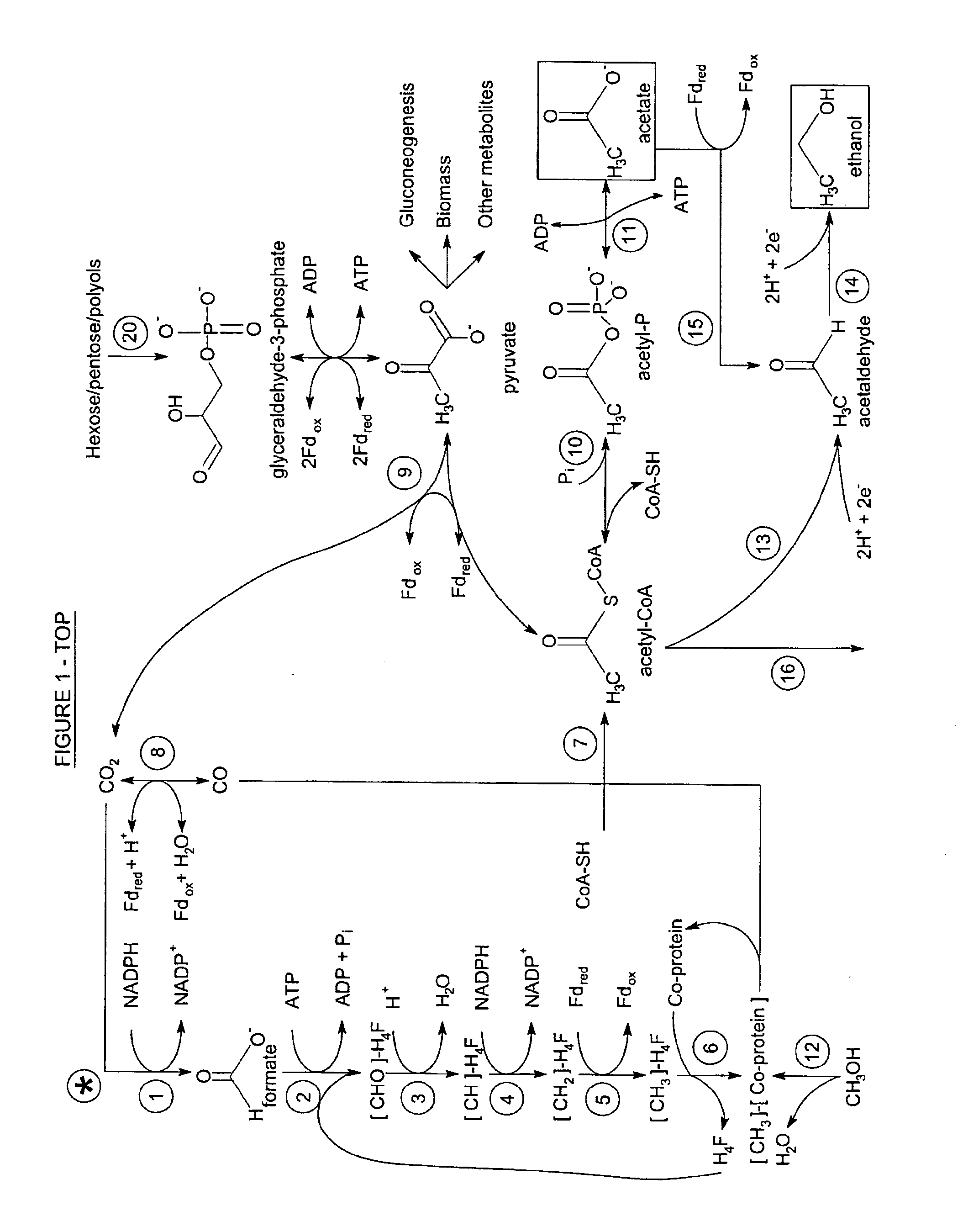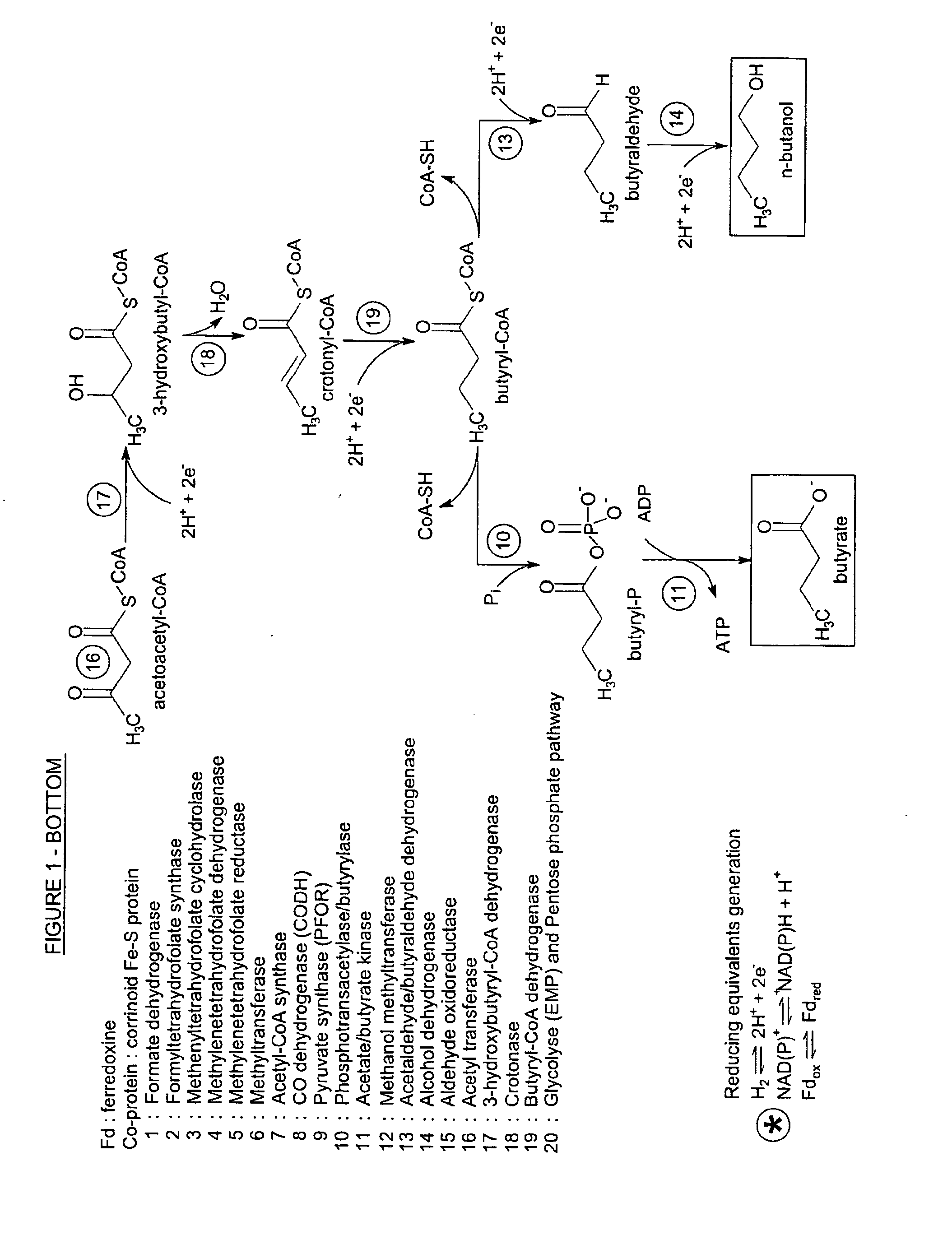Process for producing propylene from syngas via fermentative propanol production and dehydration
a technology of propanol and production process, which is applied in the direction of organic chemistry, waste based fuel, hydrocarbon preparation catalysts, etc., can solve the problems of significant weight loss, limited propanol production, and gradual decline in fermentation, so as to reduce the hydrogen to carbonmonoxide ratio and increase the efficiency of gasification and heating value of syngas.
- Summary
- Abstract
- Description
- Claims
- Application Information
AI Technical Summary
Benefits of technology
Problems solved by technology
Method used
Image
Examples
Embodiment Construction
[0122]As regards the production of synthesis gas, it can be produced from low-molecular hydrocarbons by reforming or from high-molecular weight liquid hydrocarbons or solid carbonaceous solid via gasification.
[0123]Essentially, synthesis gas is formed via steam reforming reaction and partial oxidation of natural gas (Dybkjaer I., “Tubular reforming and autothermal reforming of natural gas—an overview of available processes”, Fuel. Proc. Tech., 42, p. 85, 1995; Moulijn J., “Chemical Process Technology”, Wiley & Sons, 2001). In steam reformer (SMR) a catalyst is packed in tubes placed in a fired heater. The reformer tubes are heated externally by burners using typically natural gas. The feedstock to the reformer is a mixture of desulfurised natural gas and steam (>3:1 steam to carbon ratio in order to prevent coking of the catalyst). Steam methane reforming is endothermic and the molar ratio of hydrogen to carbon monoxide produced by SMR is approximately 3:1. If CO2 (CO2 reforming or ...
PUM
| Property | Measurement | Unit |
|---|---|---|
| temperature | aaaaa | aaaaa |
| pressure | aaaaa | aaaaa |
| pressure | aaaaa | aaaaa |
Abstract
Description
Claims
Application Information
 Login to View More
Login to View More - R&D
- Intellectual Property
- Life Sciences
- Materials
- Tech Scout
- Unparalleled Data Quality
- Higher Quality Content
- 60% Fewer Hallucinations
Browse by: Latest US Patents, China's latest patents, Technical Efficacy Thesaurus, Application Domain, Technology Topic, Popular Technical Reports.
© 2025 PatSnap. All rights reserved.Legal|Privacy policy|Modern Slavery Act Transparency Statement|Sitemap|About US| Contact US: help@patsnap.com



